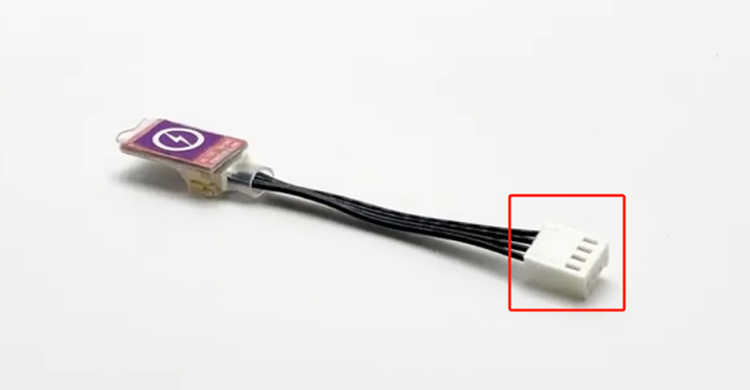


In the scenario where miners use an immersion liquid cooling system, a fan speed simulator comes into being in order to maintain system compatibility and monitoring integrity. They are capable of simulating the operational signals of real fans, allowing the miner's motherboard to accurately read and recognize the "fan is working" status. Serving as a replacement for fans on all cryptocurrency miners or other electronic devices, this accessory is essential for modifying silent or water cooled miners. It is also used to replace faulty cooling fans, enabling miners to function normally.
This fan simulator is suitable for ASIC miners with Antminer 4pin B3 fan interface, and also for miners with 4 wire B3 fan port such as Goldshell, Iceriver and Innosilicon.
Installation steps for 4Pin fan simulator:
• To ensure personal safety and protect the internal components of the miner from electrical shock damage, turn off the miner and disconnect the powering in advance.
• Remove the protective cover of the control board and confirm that the motherboard has a 4pin fan port.
• Disconnect the wire connecting the fan to the control board and remove the heat dissipation fan.
• Prepare a new fan simulator and make sure it is intact and of the correct model.
• Insert the port of the fan simulator into the fan interface on the control board. After a secure connection, reinstall the protective cover of the control board and tighten the screws.

In the mining industry, heat dissipation is an essential process for equipment. After upgrading to a liquid-cooled heat dissipation system, the fan simulator plays a crucial role. At this point, the heat dissipation process primarily relies on water circulation to effectively remove heat, and the direct role of the heat dissipation fan is replaced by the liquid cooling device. The fan simulator serves as a replacement for the original heat dissipation fan to deceive the miner, even though the actual heat dissipation task is performed by the water cooling system. This design not only ensures the stable operation of the system but also demonstrates the ingenious utilization of hardware monitoring mechanisms.
Dear Customers,
Hello, April 4, 5 and 6, 2025 (GMT+8) are the traditional Chinese festivals - Qingming Festival. Our company will suspend shipments during these 3 days and resume shipments on April 7 (GMT+8). We are deeply sorry for the inconvenience. Thank you for your understanding and support.
Best wishes,
ZEUS MINING CO., LTD